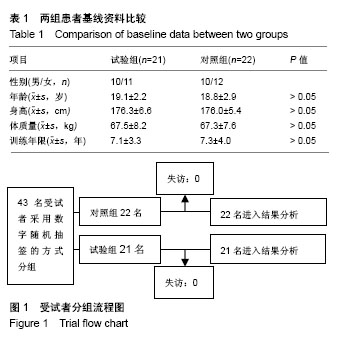| [1] Veqar, Zubia. Causes and management of delayed onset muscle soreness:A review.Elixir Human Physio.2013; 55: 13205-13211.[2] Mizumura K,Taguchi T.Delayed onset muscle soreness: Involvement of neurotrophic factors.J Physiol Sci.2016; 66(1):43-52.[3] Zubia Veqar, Shagufta Imtiyaz. Vibration Therapy in Management of Delayed Onset Muscle Soreness (DOMS). J Clin Diagn Res.2014;8(6):1-4.[4] Meamarbashi A. Herbs and natural supplements in the prevention and treatment of delayed-onset muscle soreness. Avicenna J Phytomed. 2017; 7(1):16-26.[5] Souza‐Silva E, Christensen SW, Hirata RP, et al. Blood flow after contraction and cuff occlusion is reduced in subjects with muscle soreness after eccentric exercise. Scand J Med Sci Sports.2018; 28(1):29-39.[6] 黄美欢,曹建国,贠国俊,等.肌内效贴在脑瘫儿童康复中的应用进展[J].中国康复医学杂志, 2016, 31(1):102-105.[7] 宋法明.不同膝关节贴扎类型对足球运动员急停动作稳定性的影响[J].中国组织工程研究,2017, 21(10):1583-1588.[8] Williams S, Whatman C, Hume PA, et al. Kinesio Taping in Treatment and Prevention of Sports Injuries. Sport Med.2012; 42(2):153-164.[9] Kamper SJ, Henschke N. Kinesio taping for sports injuries. British J Sport Med.2013; 47(17):1128-1129.[10] 刘生发,张锋.肌内效贴结合淋巴引流手法治疗全膝关节置换后下肢肿胀[J]. 中国组织工程研究,2017, 21(11):1647-1651.[11] Morris D,Jones D, Ryan H, et al.The clinical effects of Kinesio® Tex taping: A systematic review. Physiother Theory Pract. 2013;29(4):259-270.[12] Voglar M,Sarabon N.Kinesio taping in young healthy subjects does not affect postural reflex reactions and anticipatory postural adjustments of the trunk: a pilot study. J Sports Sci Med.2014;13(3):673-679.[13] Simon J, Garcia W, Docherty CL.The effect of kinesio tape on force sense in people with functional ankle instability. Clin J Sport Med.2014; 24(4):289-294.[14] Lee SM, Lee JH.Ankle inversion taping using kinesiology tape for treating medial ankle sprain in an amateur soccer player. J Phys Ther Sci.2015; 27(7):2407-2408.[15] Lee SM, Lee JH. Effects of ankle eversion taping using kinesiology tape in a patient withankle inversion sprain. J Phys Ther Sci.2016; 28(2):708-710.[16] Lee YS,Bae SH,Hwang JA,et al.The effects of kinesio taping on architecture, strength and pain of muscles in delayed onset muscle soreness of biceps brachii . J Phys Ther Sci. 2015; 27(2):457-459.[17] Bae SH,Lee YS, Kim GD,et al.The Effects of Kinesio-taping Applied to Delayed Onset Muscle Soreness on Changes in Pain. International Journal of Bio-Science & Bio-Technology.2014; 6(3):133-142.[18] Haksever B, Kinikli GL, Tunay VB, et al. Effect of kinesiotaping intervention on knee muscle strength and delayed onset muscle soreness pain following eccentric fatigue training. Fizyoterapi Rehabilitasyon.2016;27(1):12-18.[19] Wheeler AA, Jacobson BH.Effect of whole-body vibration on delayed onset muscular soreness, flexibility, and power. J Strength Cond Res.2013; 27(9): 2527-2532.[20] Imtiyaz S,Veqar Z,Shareef MY. To Compare the Effect of Vibration Therapy and Massage in Prevention of Delayed Onset Muscle Soreness (DOMS).J Clin Diagn Res.2014; 8 (1):133-136.[21] 史斌,安静,陈龙刚,等.人工膝关节置换术后疼痛影响因素的分析[J].中国组织工程研究, 2017,21(7):993-997.[22] Omoigui S. The Biochemical Origin of Pain – Proposing a new law of Pain: The origin of all Pain is Inflammation and the Inflammatory Response PART 1 of 3–A unifying law of pain. Medical Hypotheses.2007;69(1):70-82.[23] 龙志. 肌内效贴对延迟性肌肉酸痛的疼痛缓解效果研究及其机制探讨[D].上海:上海体育学院, 2016.[24] 吴迎,伊木清,曾凡星.MG53基因敲除对小鼠延迟性肌肉酸痛期骨骼肌损伤的影响[J].中国康复医学杂志, 2017, 32(6):636-642.[25] Farghaly HS,Mahmoud AM,Abdel-Sater KA.Effect of dexmedetomidine and cold stress in a rat model of neuropathic pain: role of interleukin-6 and tumor necrosis factor-α. Eur J Pharmacol. 2016;776:139-145. [26] Pedersen LM,Schistad E,Jacobsen LM,et al.Serum levels of the pro-inflammatory interleukins 6 (IL-6) and -8 (IL-8) in patients with lumbar radicular pain due to disc herniation: A 12-month prospective study. Brain Behavior & Immunity.2015; 46:132-136.[27] Dong LN, Yu Q, Ye JE, et al. Effects of auricular-plaster therapy on pain and serum levels of cortisol and IL-6 after cesarean section. Inter J Nurs Sci.2015;2(3):273-278.[28] Kuo SY,Tsai SH,Chen SL,et al.Auricular acupressure relieves anxiety and fatigue, and reduces cortisol levels in post-caesarean section women: A single-blind, randomised controlled study.Int J Nurs Stud.2016;53:17-26.[29] Yeh ML.Auricular Acupressure for Pain Relief in Adolescents with Dysmenorrhea: A Placebo-Controlled Study. J Altern Complement Med.2013;19(4):313-318.[30] Chen YW,Lin MF,Chen YC,et al.Exercise training attenuates postoperative pain and expression of cytokines and N-methyl-D-aspartate receptor subunit 1 in rats. Reg Anesth Pain Med.2013;38(4):282-288. |
.jpg) 文题释义:
肌内效贴:肌内效贴由日本加濑建造博士(Dr. Kenso Kase)于1973 年发明,是一种软组织贴扎技术。肌内效贴具有预防和治疗被贴扎部位的软组织损伤、消除组织肿胀减轻疼痛、协助肌肉收缩、减轻肌肉疲劳和增加关节活动度等作用。
延迟性肌肉酸痛(delayed onset muscle soreness,DOMS):好发于不习惯运动人群,一般在大强度离心运动后的8-24 h内,在48-72 h达到高峰后逐渐消失,甚至需要1周的时间恢复。
文题释义:
肌内效贴:肌内效贴由日本加濑建造博士(Dr. Kenso Kase)于1973 年发明,是一种软组织贴扎技术。肌内效贴具有预防和治疗被贴扎部位的软组织损伤、消除组织肿胀减轻疼痛、协助肌肉收缩、减轻肌肉疲劳和增加关节活动度等作用。
延迟性肌肉酸痛(delayed onset muscle soreness,DOMS):好发于不习惯运动人群,一般在大强度离心运动后的8-24 h内,在48-72 h达到高峰后逐渐消失,甚至需要1周的时间恢复。.jpg) 文题释义:
肌内效贴:肌内效贴由日本加濑建造博士(Dr. Kenso Kase)于1973 年发明,是一种软组织贴扎技术。肌内效贴具有预防和治疗被贴扎部位的软组织损伤、消除组织肿胀减轻疼痛、协助肌肉收缩、减轻肌肉疲劳和增加关节活动度等作用。
延迟性肌肉酸痛(delayed onset muscle soreness,DOMS):好发于不习惯运动人群,一般在大强度离心运动后的8-24 h内,在48-72 h达到高峰后逐渐消失,甚至需要1周的时间恢复。
文题释义:
肌内效贴:肌内效贴由日本加濑建造博士(Dr. Kenso Kase)于1973 年发明,是一种软组织贴扎技术。肌内效贴具有预防和治疗被贴扎部位的软组织损伤、消除组织肿胀减轻疼痛、协助肌肉收缩、减轻肌肉疲劳和增加关节活动度等作用。
延迟性肌肉酸痛(delayed onset muscle soreness,DOMS):好发于不习惯运动人群,一般在大强度离心运动后的8-24 h内,在48-72 h达到高峰后逐渐消失,甚至需要1周的时间恢复。

.jpg) 文题释义:
肌内效贴:肌内效贴由日本加濑建造博士(Dr. Kenso Kase)于1973 年发明,是一种软组织贴扎技术。肌内效贴具有预防和治疗被贴扎部位的软组织损伤、消除组织肿胀减轻疼痛、协助肌肉收缩、减轻肌肉疲劳和增加关节活动度等作用。
延迟性肌肉酸痛(delayed onset muscle soreness,DOMS):好发于不习惯运动人群,一般在大强度离心运动后的8-24 h内,在48-72 h达到高峰后逐渐消失,甚至需要1周的时间恢复。
文题释义:
肌内效贴:肌内效贴由日本加濑建造博士(Dr. Kenso Kase)于1973 年发明,是一种软组织贴扎技术。肌内效贴具有预防和治疗被贴扎部位的软组织损伤、消除组织肿胀减轻疼痛、协助肌肉收缩、减轻肌肉疲劳和增加关节活动度等作用。
延迟性肌肉酸痛(delayed onset muscle soreness,DOMS):好发于不习惯运动人群,一般在大强度离心运动后的8-24 h内,在48-72 h达到高峰后逐渐消失,甚至需要1周的时间恢复。